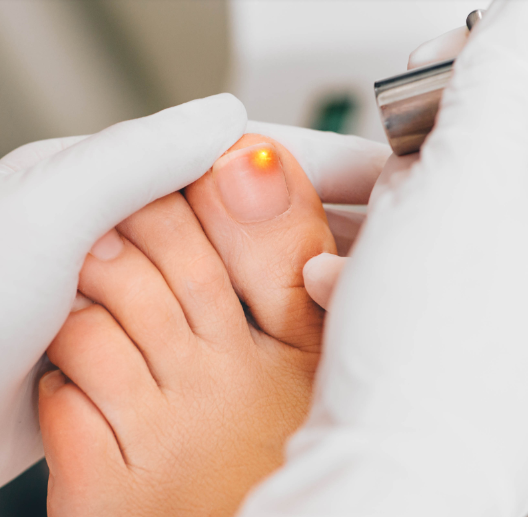Do you need more effective fungal infection treatment, but finding traditional options frustrates you? You’re not alone. Whether an occasional athlete’s foot or a persistent candida issue, fungal infections can be challenging to conquer for good.
But now, there are faster-acting treatments available that deliver more robust relief. New prescription medications and natural remedies penetrate deeper to attack the root cause for relief that arrives sooner.
This guide explores the cutting-edge fungal infection treatment options on the market that have been proven to eliminate fungal pathogens quickly.
Common Symptoms of Fungal Infections
Here are some common symptoms you need to know:
- Redness, Itching, and Swelling
The body’s immune response kicks into gear to fight fungal invaders, causing infected areas to become noticeably red, irritated and puffy. Itching can range from mildly bothersome to downright unbearable, depending on the infection’s location and severity.
- Cracked or Peeling Skin
As fungi take hold, they dismantle the protective acid mantle layer of skin, leaving it dry, flaky and cracked. This paving-the-way effect allows infections to spread more easily underneath, as split skin can’t form a reliable barrier. Look for shedding and peeling patches in folds or on feet, hands or scalp.
- Foul Odor in Some Cases
Certain fungal types, like those that cause jock itch or ringworm, create an unpleasant, pungent stench. This occurs as a byproduct of the organisms’ metabolic processes breaking down sweat and skin cells. Don’t ignore an unexplained “off” smell that won’t wash away, as it could signal the need for an antifungal treatment.
Fast-Acting Over-the-Counter (OTC) Treatments
Here are some Treatments you need to know:
- Topical Antifungal Creams
Creams with clotrimazole, miconazole or terbinafine attack fungi on contact. A thin layer applied twice daily dries out their environment. Within a week of consistent use, redness and itching subside. If symptoms don’t improve after a month, see your doctor for a prescription strength alternative.
- Antifungal Sprays and Powders
Antifungal sprays and loose powders work deep between toes with each application to treat significant, multi-toed fungus infections like athlete’s foot. The convenience of these formulas makes them ideal for areas that are challenging to reach with creams.
- Antifungal Nail Treatments
If toenail fungus is your issue, look for treatments with urea or ciclopirox. Apply the solution underneath the nail daily for 6-12 months. It may take a long time to fully clear up due to nail fungus’ tendency to burrow deep, but these prolonged OTC options are cheaper than prescriptions.
Prescription Treatments for Severe Infections
Here are some prescription treatments for severe infections you need to know:
- Oral Antifungals
A doctor may prescribe a pill-based antifungal like fluconazole or itraconazole for widespread, persistent cases. Taken daily for 2-4 weeks, they attack fungi throughout the body for fast, effective relief. Oral medications provide a robust solution when infections recalcitrant resist topicals.
- Stronger Topical Prescription Creams
If an infection is stubborn, a prescription-strength topical like ketoconazole or econazole cream packs a more potent punch. These thick formulas are applied multiple times daily to target tough, resistant fungi at the infection site that elude weaker creams.
- Side Effects to Consider
Rare side effects of antifungals include nausea, diarrhea and headaches. Prescription-strength increases this risk slightly. Always take oral medications with food and water, avoid driving if tired, and contact your doctor if symptoms persist or worsen rather than improve over a few days. Most side effects subside once treatment ends.
Home Remedies and Natural Solutions
Here are some home remedies you need to know:
- Tea Tree Oil
With powerful antifungal terpinen-4-ol, tea tree fights fungi when applied topically. Add 5-10 drops to a small amount of coconut or sweet almond oil and gently rub onto clean, dry skin twice daily. Use for 2-4 weeks as tea tree oil can irritate sensitive skin when not diluted.
- Coconut Oil
Nature’s antifungal fatty acids in coconut oil starve pathogens while moisturizing skin. Gently massage a teaspoon onto toenails or infected areas after showering. Reapply throughout the day for its anti-itch, pro-healing effects, taking care of oily surfaces.
- Apple Cider Vinegar
The acid in apple cider vinegar restores the skin’s normal pH, making it inhospitable for fungal growth. Soak cotton balls in raw, unfiltered vinegar before bed and secure them with tape to targeted areas like the athlete’s foot. Its antifungal properties may eliminate infection within days.
Conclusion
You now understand that effective treatment requires speed and strength to overpower stubborn fungal infections.
Apply what you’ve learned about prescription medications, natural remedies, and lifestyle hacks that work together to eliminate the root cause fast. Finally, say goodbye to frustrating flare-ups for good as you treat – not just symptoms – but the infection itself.
Feel free to let me know if you’ve found a functional, fast-acting solution tailored for you. Feel confident to start living life fully without fungal holding you back.



















